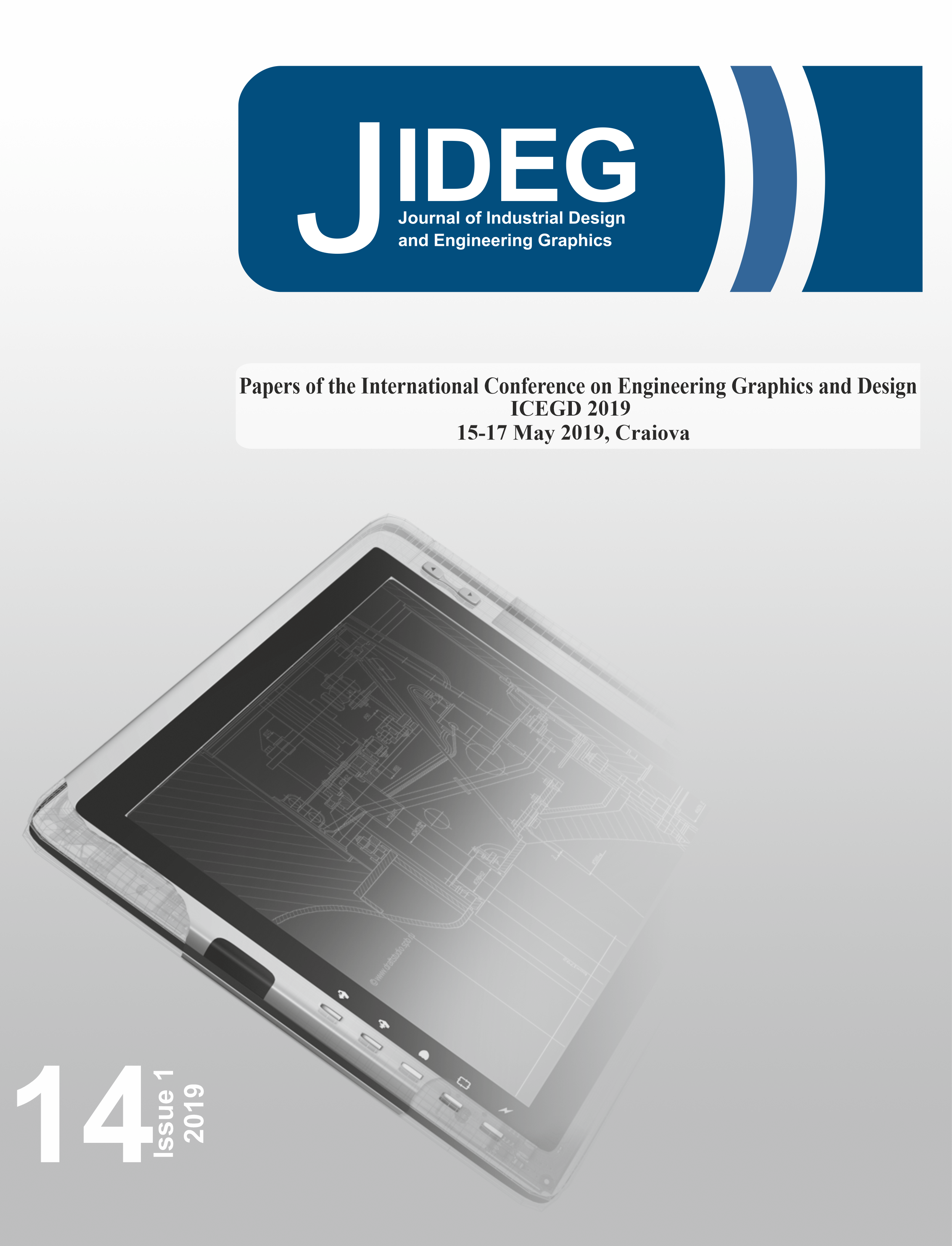ABOUT THREE-DIMENSIONAL MODELS OF OSTEOSYNTHESIS SYSTEMS
Keywords:
virtual tibia, fractures, centromedular fixation, virtual reconstruction, virtual osteosynthesisAbstract
Implantology is based on the failure of orthopedic treatment, or cases where orthopedic treatment is incapable of reducing or maintaining, for example, fracture of the femoral neck with movement. The advantage of centromedular fixation is that it allows the bone to physically load as much as possible, minimizing the risk of implant failure. The drawbacks of conventional nails have been eliminated with the introduction of the centromedular stem locking system. The purpose of this study was to obtain several virtual biomechanical systems on which to study several types of tibial fractures and several osteosynthesis systems. Starting from the tomographic images of the tibia, a virtual model of this bone component was developed. This model was "finalized" and modified using certain Geomagic techniques and then imported into SolidWorks. The osteosynthesis element used was the rigid classical nail with orthopedic screws which was modeled using the direct observation and measurement method. It is intended that these virtual components to be used to make orthopedic virtual osteosynthesis systems that are then analyzed in Ansys with the finite element method.
Downloads
References
Buciu, G., Popa, D.L., Grecu, D., Niculescu, D., Nemes, R., (2012). Virtual comparative study on the use of nails at the fixation of tibial fractures using finite element method, Proceedings of The 4th International Conference Advanced Composite Materials Engineering COMAT 2012, Lux Libris Publishing House, ISBN 978-973-131-162-3, pp.381-386, Brasov, Romania.
Ciunel, S., Duta, A., Popa D.L., Popa-Mitroi, G., Dumitru, V.C., (2014). The Behaviour of the Virtual Human Head-Neck System during the Main Movements, Applied Mechanics & Materials, no.657, pp. 780-784.
Popa A.D., Mogosanu A.M., Popa D.L., Duta A., Teodorescu A., (2017). Virtual and rapid prototyping methods applied in civil engineering: Snow, wind and earthquake simulations on a five storey building, FME Transactions, vol. 45, no. 2, pp. 276-282.
Popa, D.L., Buciu, G., Grecu, D., Niculescu, D., Chiutu, L., Stoica, M., (2013). Studies about virtual behaviour of tibia fractures and nails during the fixation process, JIDEG, no.8, pp. 5-10.
Popa, D., Duta, A., Pitru, A., Tutunea, D., Gherghina, G., (2013). About the Simulation Environment for Dental Implant Studies, Scientific Bulletin of the "POLITEHNICA" University of Timisoara HIDROTEHNICA Series, vol. 58, pp. 137-141.
Popa, D., Tarnita, D., Iordachita I., (2005). Study method for human knee applicable to humanoid robots, Proceedings of The 14th International Workshop on Robotics in Alpe-Adria-Danube Region, RAAD, vol.5, pp.26-28.
Popa, D., Tarnita, D.N., Tarnita, D., Grecu, D., (2005). The generation of the three-dimensional model of the human knee joint, Romanian Journal of Morphology and Embryology, vol.46, no.4, pp. 3-6.
Tarnita D., Tarnita D.N., Bizdoaca N., Popa D., (2009). Contributions on the dynamic simulation of the virtual model of the human knee joint, Materialwissenschaft und Werkstofftechnik: Entwicklung, Fertigung, Prüfung, Eigenschaften und Anwendungen technischer Werkstoffe, vol. 40, no. 1-2, pp. 73-81.
Tarnita D., Tarnita D.N, Bolcu, D., (2011). Orthopedic implants based on shape memory alloys, chapter in Biomedical Engineering – From Theory to Applications, in InTech Publishing House, pp.431-468, ISBN: 978-953-307-283-8, Viena.
Vatu, M., Craitoiu, M.M., Vintila, D., Mercut, V., Popescu, M.S., Scrieciu, M., Popa, D..L., (2018). Determination of resistance forces from mandibular movements through dynamic simulation using kinematic analysis and finite elements method, Romanian Journal of Oral Rehabilitation, Vol. 10, Issue 1, pp. 20-28.
Vatu, M., Vintila, D., Popa, D.L., (2018). 3D Skull Virtual Model Based on CT or MRI Images Used for Dentistry Simulations, Applied Mechanics and Materials, Vol. 880, pp. 101-110.

Downloads
Published
Issue
Section
License
Copyright (c) 2020 Journal of Industrial Design and Engineering Graphics

This work is licensed under a Creative Commons Attribution-NonCommercial 4.0 International License.






